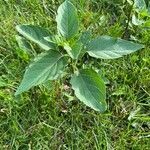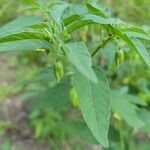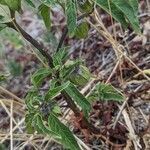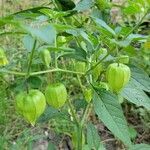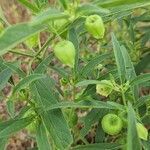Rhizomatous perennial to 50 cm high, glabrescent or sparsely pubescent with minute simple hairs. Leaves alternate, 1–2 per node (but not opposite); lamina elliptic, cuneate at base, up to 9 cm (usually c. 6 cm) long, entire or slightly toothed or lobed; petiole to 3 cm long, grooved above. Pedicels 8–15 mm long. Calyx usually 8–10 mm long; lobes narrowly triangular, 5–6 mm long. Corolla rotate, 10–12 mm long, greenish-yellow with dark spots between anthers. Anthers 2.5–4 mm long. Style 6–8 mm long. Fruiting calyx 10–angled, 15–25 mm long, pale green. Berry globular, c. 10 mm diam. Seeds disc-shaped to broadly reniform, 1.5–2 mm long, brown to yellow-brown.
A herb.
